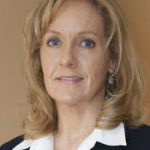
Is this service right for you?
by Pam Mundell, CFP, CLU, CHS
What is private wealth management? While the term gets tossed around here and there, many Canadians are unfamiliar with what a private wealth management (PWM) company can offer. This is a quiet, lesser-known corner of the investment industry, and often relies on referrals from other professionals.
The basics
First of all, I do not claim to be a PWM expert and cannot detail every service offered. I can, however, address companies I have had direct dealings with and explain the general offerings.
A PWM company consists of one, or possibly a team, of Portfolio Managers (PM) who are responsible for the selection of the specific securities in a client’s portfolio. PM is the highest designation in the securities industry and a PM has a fiduciary responsibility to act in a client’s best interest. Most PMs have a Chartered Financial Analyst (CFA) professional designation.
Most PWM companies offer separately-managed accounts and pooled funds. The separately-managed account is normally viable once you and your family have investible assets in the range of $750,000 or more. The client will be assigned a PM who will create an investment policy statement to adhere to a client’s unique aims, time horizon and risk parameters. This is a comprehensive document which forms the basis of the relationship and provides the mandate from which the PM will operate. This leads to an individually tailored portfolio to meet a client’s objectives. In a separately-managed account, the client would directly own stocks, bonds, and possibly preferred shares. The account is housed with a custodial firm and the client would have online access to view the account.The PM would have discretionary trading authority and would therefore not consult with the client prior to initiating a trade, but would build a portfolio to achieve a client’s objectives.
Your professional team
Your PM will also work closely with your professional network. This includes consulting with your trusted Certified Financial Planner (CFP), lawyer and accountant to ensure your network is working cohesively for you and your family. Your CFP would work in partner- ship with the PM and be responsible for retirement income planning,estate planning and all aspects of financial planning.nYour CFP may also be life- and health-licensed and look after your life, critical illness, disability and long-term care insurance needs.
Benefits of a separately-managed account
The fees for investment management associated with a separately-managed account are debited from the account and are a tax deduction for the client on a non-registered portfolio. Therefore there is no embedded fee in the portfolio. The client pays directly for the trading costs incurred by the PM. You can also expect comprehensive reporting with commentary from the PM. The statements I have seen are exceptional, and offer details such as net amount invested, dividends received, performance of your portfolio and full disclosure of all fees.
Pooled funds
Pooled funds are also offered by many PWM companies and have a much lower entry threshold. Approximately $100,000 or $150,000 of investible assets would be required to gain entry to these pools. Pooled funds are often managed by the same group of PMs and typically have a lower fee level than most mutual funds. Investors in pooled fund investments benefit from economies of scale, which allow for lower trading costs per dollar of investment, diversification and professional money management.
Meet Molly and Dave
Molly and Dave are a married couple with a 16-year-old daughter, Sara. Dave is 54 years old and is a self-employed contractor who earned $94,000 last year. Molly is 53 years old and an occupational therapist at a local clinic.Molly earns $76,000 per year. Neither Molly nor Dave belong to a company pension plan, but Molly’s employer does offer a group Registered Retirement Savings Plan (group RRSP) option through payroll deduction. Molly contributes $200 per pay into her RRSP (every two weeks) and each year her employer has given her a company bonus of three per cent of her annual salary, which goes directly into her group RRSP.
Molly has just over $58,000 in her group RRSP, plus a locked-in RRSP of $168,000 from the years she worked as an occupational therapist at the local hospital and was a member of the defined benefit pension plan.
Dave has always been self-employed and his income has varied over the years, along with his RRSP contributions. Dave currently has $382,000 in his RRSP and contributed $16,000 for the 2015 income tax year.
Molly and Dave also have a Registered Education Savings Plan (RESP) for their daughter, which currently has $42,000. This is the last year they will be making contributions and getting the grant as Sara turns 17 later this year.
Molly‘s widowed mother passed away last year and Molly and her brother will be sharing the proceeds of her mother’s estate. Molly expects to receive more than $400,000 as an inheritance in a couple of weeks and wonders about her options. Molly has a small Tax-Free Savings Account (TFSA) of $3,000 and Dave has never bothered to open a TFSA.
Molly and Dave make an appointment to see the CFP who set up the group RRSP with Molly’s employer.The couple requests suggestions and advice about Molly’s locked-in RRSP and Dave’s RRSP, which are currently at another financial institution. They would also like ideas about where to invest the $400,000 inheritance. Molly and Dave want to make sure they have enough money to help pay for Sara’s planned university education, plus top up their retirement savings and take a trip to Europe next summer.
The CFP has a referral relationship with a PWM company and recommends Molly and Dave consolidate all their assets with this company.The CFP will help the couple prepare a comprehensive financial plan to ensure they are saving enough and to give them an idea of what income they can expect at retirement.They’d also like to know how the Canada Pension Plan (CPP) and Old Age Security (OAS) integrate with their RRSP investments and create a plan to take advantage of the room still available in a TFSA for both Molly and Dave. The couple will also make the final contribution into the RESP for Sara, as this is the last year Sara will receive the 20 per cent Canada Education Savings Grant.
The CFP has arranged for the PM to meet with Molly and Dave at the CFP’s office in a few weeks. The PM will take the time to determine the time horizon, income requirements and the level of investment risk for Molly and Dave, and then create an investment policy statement. The smaller plans, Molly’s locked-in RRSP, the TFSA for the couple and the RESP, will all be invested in the pooled funds. Dave’s $382,000 RRSP and the balance of the $400,000 inheritance, which will be in Molly’s name alone, will each be a separately-managed account. The investment management fees charged directly to Molly’s account will be a tax deduction as this is a non-registered plan.
The CFP will meet with Molly and Dave periodically during the year to update any changes in their personal and financial situations.The CFP will examine their current life, critical illness and disability insurance policies to make sure these policies are sufficient for their current needs.The CFP will also monitor and update their progress with regard to their retirement plan.
The PM will meet with Molly and Dave once or twice a year at the CFP’s office. The PM will provide a portfolio review and commentary on the markets and opportunities for future investments.
Molly and Dave are very pleased with the services provided by both the CFP, the PWM company and the PM. The overall costs in terms of percentage of their investments is lower and a portion of those costs are a tax deduction for Molly.The fees are clearly disclosed and Molly and Dave have their own private PM who is handling their investments. They can view their accounts online at any time and have a better understanding of the individual securities in their portfolio. They also benefit from all services provided by a CFP and feel they are on a clear path to achieve their retirement goals.
The take away
Always ask questions. Browse online and call your CFP to find out about other investment options and to determine how you can lower your fees. Many banks, mutual funds and life insurance companies offer some form of PWM services for investors with higher investable assets. Many of these companies also have preferred series funds with lower fees (MERS) once an investor has reached a certain investment threshold. n
 Pam Mundell is a licensed independent investment and financial planner and principal of Pam Mundell Financial Planning Services in Kingston.
Pam Mundell is a licensed independent investment and financial planner and principal of Pam Mundell Financial Planning Services in Kingston.
NOTE TO READERS:THE VIEWS OF THE AUTHOR DO NOT NECESSARILY REFLECT THOSE OF COYLE PUBLISHING.THIS ARTICLE IS PROVIDED AS A GENERAL SOURCE OF INFORMATION ONLY AND SHOULD NOT BE CONSIDERED TO BE PERSONAL INVESTMENT OR LEGAL ADVICE, OR A SOLICITATION TO BUY SERVICES. READERS SHOULD CONSULT WITH THEIR FINANCIAL OR LEGAL ADVISOR TO ENSURE IT IS SUITABLE FOR THEIR CIRCUMSTANCES.






